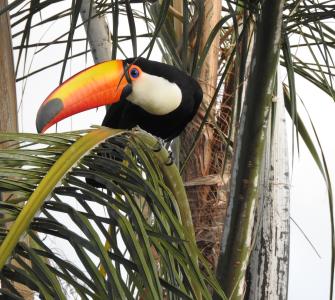MATOPIBA, an acronym for the collective states of Maranhão, Tocantins, Piauí, and Bahia, is a specific area of the Brazilian Cerrado biome, which serves as the world’s most biodiverse savannah. Increasingly, MATOPIBA is also known as Brazil’s new “agricultural frontier,” as the area is being cleared rapidly for soybean and livestock production.
Local farmers are the key decision makers when it comes to both agricultural expansion and the implementation of more sustainable farming practices. Their decisions depend on numerous production factors, such as the suitability, cost, and size of land available for expansion, as well as relevant incentive mechanisms, such as technical assistance programs, Payment for Ecosystem Services programs, and cultural factors, such as perceptions about the institutional context and market. In addition, farmers have to consider the available incentive mechanisms, such as technical assistance programs and Payment for Ecosystem Service (PES) programs.
In order to encourage the implementation of sustainable soybean practices in the MATOPIBA region of the Brazilian Cerrado, Conservation Strategy Fund (CSF) completed a project in partnership with Instituto de Pesquisa Ambiental da Amazônia (IPAM - Amazon Environmental Research Institute) to examine different incentive mechanisms for soybean producers. Our study, Evaluation of Incentive Strategies for Sustainable Soy Production, uses a behavioral-economics framework to interpret the preferences of 53 large-scale soybean producers from ten municipalities in Tocantins and Bahia.
The study examined three potential approaches to soybean production that could (1) reduce deforestation and incentivize the expansion of soybean farms on pasturelands; (2) incentivize additional conserved areas; and (3) incentivize more sustainable production techniques. Through our research, we found that the environmental benefits of adopting these strategies are greater than the overall costs of implementing them. In addition, we proposed a Deforestation Compensation Policy, which would incentivize the expansion of soybean farms on abandoned pastureland, thereby reducing deforestation, and can be used to finance the proposed Payment for Ecosystem Services programs to promote conservation and more sustainable production patterns.
We hope this work will contribute to the design of more efficient incentives to engage farmers in sustainable production at the lowest cost. To learn more, read our discussion paper in Portuguese and English.
This project was funded by Conservation International Brasil (CI), via the United Nations Development Program (UNDP) in its role of the MATOPIBA Global Environment Facility.
Photo: Giant toucan, native to the Brazilian Cerrado.
Photo Credit: edmo junior on Unsplash

